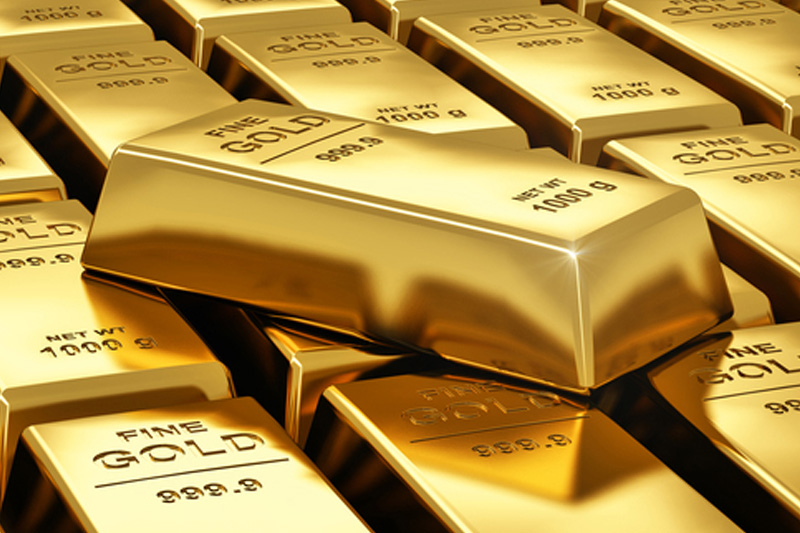Investing.com -- Gold inched down amid a relatively flat dollar, as the European Central Bank held interest rates steady at a highly-anticipated meeting on Thursday, while hinting that rates could be cut again in the short-term future.
On the Comex division of the New York Mercantile Exchange, gold for June delivery traded in a broad range between $1,244.50 and $1,272.20 an ounce before settling at $1,252.70, down 1.60 or 0.13% on the day. At session-highs, gold surged above $1,270 in European afternoon trading, hitting its highest level in more than a month. The precious metal reversed course shortly after amid heavy profit taking, halting a four-day winning streak. Despite the mild losses, gold is still up more than 17% since the start of the year and is on pace for one of its strongest opening halves in more than a decade.
Gold likely gained support at $1,063.20, the low from January 4 and was met with resistance at $1,280.70, the high from Mar. 11.
On Thursday afternoon, the ECB's Governing Council left its benchmark interest rate for the euro zone at a record-low of zero in a closely-watched decision in Frankfurt. At the same time, the ECB's deposit rate remained unchanged at Minus-0.4%, while its marginal lending facility rate also stayed unchanged at 0.25%. In March, the ECB lowered the deposit rate, or the rate it charges on overnight, commercial bank deposits parked at the central bank, to its lowest level on record. The marginal lending rate is the rate at which banks pay to borrow money stored at the ECB.
The Governing Council also opted to leave the scope and duration of its comprehensive quantitative easing program unchanged at €80 billion per month. In December, the ECB extended the asset-purchasing program through March, 2017, "or beyond." At a press conference following Thursday's policy statement release, ECB president Mario Draghi sent strong indications that further rate cuts could be forthcoming.
"We continue to expect them (interest rates) to remain at present, or lower, levels for an extended period of time and well past the horizon of asset purchases," Draghi said.
The ECB's stance could prompt the Federal Reserve to follow suit when it faces a similar interest rate decision next week. A subsequent rate cut by the ECB could also allow the Fed to implicitly tighten monetary policy while leaving short-term interest rates unchanged. Since approving a historic interest rate hike in December, the Federal Open Market Committee (FOMC) has held its benchmark Federal Funds Rate between 0.25 and 0.50% at each of its first two meetings this year.
Any rate hikes by the Fed this year are viewed as bearish for gold, which struggles to compete with high-yield bearing assets in rising rate environments.
Elsewhere, initial jobless claims in the U.S. fell by 6,000 for the week ending on April 16, dropping to a lower-than-expected 247,000. Analysts expected new claims to rise by 12,000 to 265,000. As a result, the four-week moving average fell to 260,500, from 265,000 a week earlier.
The U.S. Dollar Index, which measures the strength of the greenback versus a basket of six other major currencies, fell more than 0.20% to an intraday low of 93.87, rallying sharply later in the session. In U.S. afternoon trading, the dollar index stood at 94.53, down 0.01% on the day. The index remains near eight-month lows.
Dollar-denominated commodities such as gold become more expensive for foreign purchasers when the dollar appreciates.
Silver for May delivery hit a fresh 11-month high at $17.715 an ounce, before falling back slightly to $17.115 at the close of trading.
Copper for May delivery gained 0.013 or 0.58% to close at $2.251 a pound.
